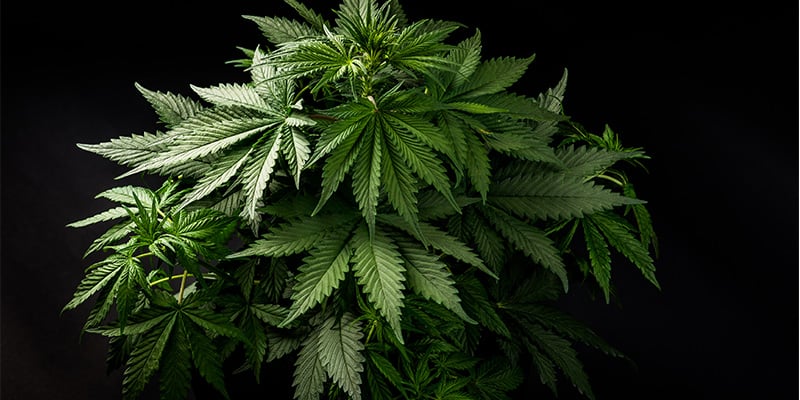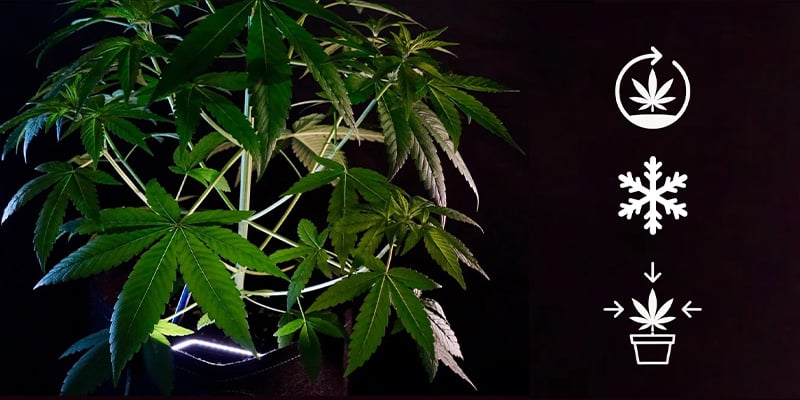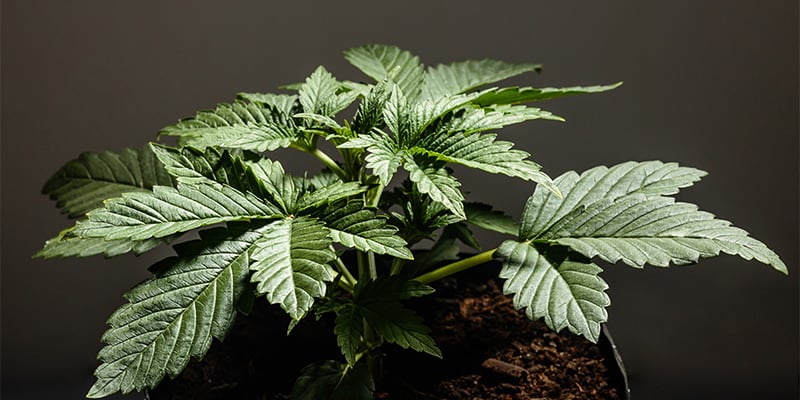What is cannabis indica?
.jpg)
Cannabis indica is often seen as the “relaxing” side of cannabis, but is that really the whole story? From its origins in the Hindu Kush mountain range to its unique growth traits and terpene-driven effects, this guide explores what makes Indica distinct. Read on to learn the facts and everything you need to know.
Cannabis indica has long carried the reputation of being the “relaxing” type of cannabis, the one said to ease the body and mind, and also send you gently off to sleep. But what is indica really, and where does that idea come from?
While many people still think of Cannabis indica as the calming counterpart to the more “energizing” sativa, modern research tells a more complex story. The meaning of indica isn’t simply about feeling soothed or sleepy; it’s about a unique set of visual traits, growth characteristics, and chemical compounds (especially terpenes) that influence its effects.
So, does indica always make you feel relaxed, or is it more nuanced than that? Let's explore what sets indica apart, how it works, and why understanding its true nature matters for growers and consumers alike.
Understanding Cannabis indica: The basics
.jpg)
At its core, Cannabis indica is one of the main botanical classifications of the cannabis plant, alongside Cannabis sativa and Cannabis ruderalis. First identified in the late 18th century, indica plants were noted for their shorter, bushier stature compared to their tall and slender sativa counterparts. Today, the term “indica” is still widely used to describe cannabis varieties with these visual and growth traits.
But what is indica really, beyond appearances? In the modern cannabis world, the word often doubles as shorthand for describing effects, where indica is linked to a relaxing or even sedating experience, and sativa is often associated with more uplifting ones. However, this traditional “indica vs sativa” split is increasingly questioned. Current research suggests that chemical composition, particularly terpene profiles, may explain differences in effects more accurately than plant type alone.
So, is indica an outdated term for cannabis? Not entirely. While it may not predict effects as neatly as once thought, “indica” still holds value for growers and consumers as a way to talk about plant morphology, growth patterns, and cultural lineage. If you want to take a deeper dive into how indica and sativa really compare, check out our complete guide on indica vs sativa.
The origins of Cannabis indica
The story of Cannabis indica begins in the Hindu Kush mountain range, a rugged region spanning parts of Afghanistan, Pakistan, and northern India. In this environment, cannabis plants evolved to thrive under harsh conditions: short summers, colder temperatures, and rocky soils. As a result, indica varieties developed into short, resilient, and fast-flowering plants, traits that continue to distinguish them today.
Traditionally, Cannabis indica was cultivated for more than just smoking. Communities across Central and South Asia valued the plant for producing hashish, a concentrated cannabis resin that remains culturally significant in regions such as Afghanistan and Nepal. The plant's dense buds and resin-heavy trichomes made it especially suited for this purpose, cementing its role in local economies and spiritual practices.
The meaning of indica as we use it today, beyond its geography, stems from these origins. What started as a botanical classification tied to a region has since grown into a global concept. While modern hybrids blur the lines between indica and sativa, the roots of Cannabis indica remain firmly linked to its ancestral homeland and its role in shaping cannabis traditions through the centuries.
How to recognize indica

One of the easiest ways to understand indica is to look at the plant itself. Cannabis indica plants are typically short and bushy, rarely growing beyond 1 to 2 meters in height. They have a compact structure, with broad, dark green leaves that differ noticeably from the long, narrow leaves of cannabis sativa.
Another hallmark of indica is its dense, resin-rich buds. These flowers grow tightly packed, often giving the plant a chunky, stocky appearance. This makes indica strains especially efficient for resin extraction, returning to their long history in hashish production.
Compared to sativa, indicas also tend to have a quicker flowering cycle, which historically made them well-suited to the short summers of their native regions. Today, these traits still appeal to growers looking for hardy, fast-yielding plants.
The real effects of indica: Relaxing or something more?
.jpg)
So, what does indica do to you in practice? For decades, Cannabis indica has been associated with deep relaxation, couch-lock, and sleepiness. Many users describe indica effects as body-focused, soothing, and perfect for unwinding at the end of the day. It's no wonder people often ask: Does indica make you sleepy? Or is indica an upper or a downer?
The truth is much more nuanced. While indica strains are commonly thought of as calming, their actual effects depend largely on their chemical makeup, especially terpenes. Compounds like myrcene, often found in high concentrations in indica varieties, are linked to sedating, muscle-relaxing qualities. Others, such as linalool (also present in lavender), may contribute to sleep-promoting and physically soothing properties.
But not all indicas automatically knock you out. Some may feel lighter or even slightly uplifting, depending on their terpene profile and cannabinoid balance. In other words, asking what indica does to you doesn't have a one-size-fits-all answer. Instead, the effects of cannabis are best understood through terpene research rather than simply whether a plant is classified as indica or sativa.
For a closer look at how terpenes shape your cannabis experience, check out our article on terpenes and terpenoids.
Growing characteristics of indica

From a cultivation perspective, Cannabis indica is prized for being robust, adaptable, and relatively easy to grow. These traits make it an excellent choice for both beginners and experienced growers.
One of the key advantages of indica is its short flowering cycle. While sativa varieties can take around 10 to 16 weeks to finish, indicas typically complete their bloom phase in just 6 to 9 weeks. This faster turnaround means growers can harvest sooner and, in some cases, even achieve multiple crops per year under the right conditions.
In terms of climate, indica strains are well-suited to cooler environments. Their origins in the Hindu Kush region mean they can tolerate lower temperatures and shorter growing seasons, thriving where some sativa plants might struggle.
Indicas also adapt well to both indoor and outdoor cultivation. Their compact, bushy structure makes them ideal for indoor setups with limited vertical space, while outdoors, they remain hardy and manageable in size. This growth pattern not only makes them easier to control but also reduces the risk of detection in regions where discretion is important.
Overall, indica's growth characteristics, fast flowering, climate resilience, and compact form make it a versatile option for cultivators around the world. For a deeper dive into cultivation techniques and tips, explore our complete grow guide hub.
Is Cannabis indica right for you?

So, what does indica do, and is it the right choice for your needs? While Cannabis indica is often associated with relaxation, sleep support, and body-focused effects, the real story is more nuanced. Its influence comes not only from being “indica” but also from the unique terpene profiles and cannabinoids found in each strain.
Visually, indica plants are easy to recognize by their short, bushy stature and dense buds, and they remain a favorite among growers for their fast flowering cycles and resilience. Whether you're a newcomer curious about indica, a medical user exploring potential relief, or a grower looking for compact, reliable plants, indica offers something worth considering.
If you'd like to explore specific examples, check out our guide to the top 5 indica strains. And if growing indica has sparked your interest, you can find everything you need to get started, from lights and soil to accessories, at our Growshop.
Ultimately, Cannabis indica remains one of the most important and influential categories in the cannabis world. Understanding its origins, traits, and effects not only helps you make better choices but also deepens your appreciation for the diversity of this remarkable plant.





 United States
United States










